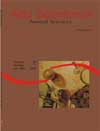<b>Sediment sample collecting in fish ponds</b> - DOI: 10.4025/actascianimsci.v27i3.1217
Abstract
Sample collecting is crucial for the representativeness of sediments analysis in fish pond. The number of samples and their randomization are among the various factors that may affect results. Current research aims to analyze and develop a technique for sample collecting in fish pond through the evaluation of the effects of the sample number on the variability of results obtained. A fry pond at the Fish culture Station of the State University of Maringá/Codapar, located in the district of Floriano, Maringá city, Paraná State, Brazil, was used. Whereas samples were collected in nine sites within the pond, according to the square division method, in a randomized imaginary S, a sample comprising 10 simple samples was randomly collected for comparison with the pond original soil at its margin. The main chemical characteristics of the original soil and of the pond sediments in the samples were determined. Highest variation coefficients among the characteristics were phosphorus and carbon; soil pH showed the lowest coefficient. It has been found that a representative sample, at 5% level, could be obtained from seven randomly collected simple samples at a 20% variation of the correct average. Fifty-six collections of simple samples were needed in the case of phosphorus and carbon, at 1% level of probability and 10% average variability. The six square division method plus the imaginary S-collection method and randomization were a good technique to assess the pond fertilityDownloads
Download data is not yet available.
Published
2008-03-19
How to Cite
Pereira Ribeiro, R., Sengik, E., Lopera Barrero, N. M., Ciola, A. L., Marques Moreira, H. L., Rosa Sussel, F., Lupchinski Junior, E., & Benites, C. (2008). <b>Sediment sample collecting in fish ponds</b> - DOI: 10.4025/actascianimsci.v27i3.1217. Acta Scientiarum. Animal Sciences, 27(3), 399-403. https://doi.org/10.4025/actascianimsci.v27i3.1217
Issue
Section
Animal Production
DECLARATION OF ORIGINALITY AND COPYRIGHTS
- I Declare that current article is original and has not been submitted for publication, in part or in whole, to any other national or international journal.
The copyrights belong exclusively to the authors. Published content is licensed under Creative Commons Attribution 4.0 (CC BY 4.0) guidelines, which allows sharing (copy and distribution of the material in any medium or format) and adaptation (remix, transform, and build upon the material) for any purpose, even commercially, under the terms of attribution.
Read this link for further information on how to use CC BY 4.0 properly.
0.9
2019CiteScore
29th percentile
Powered by 








































